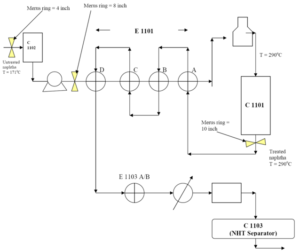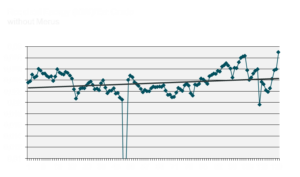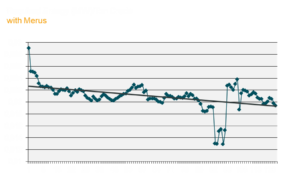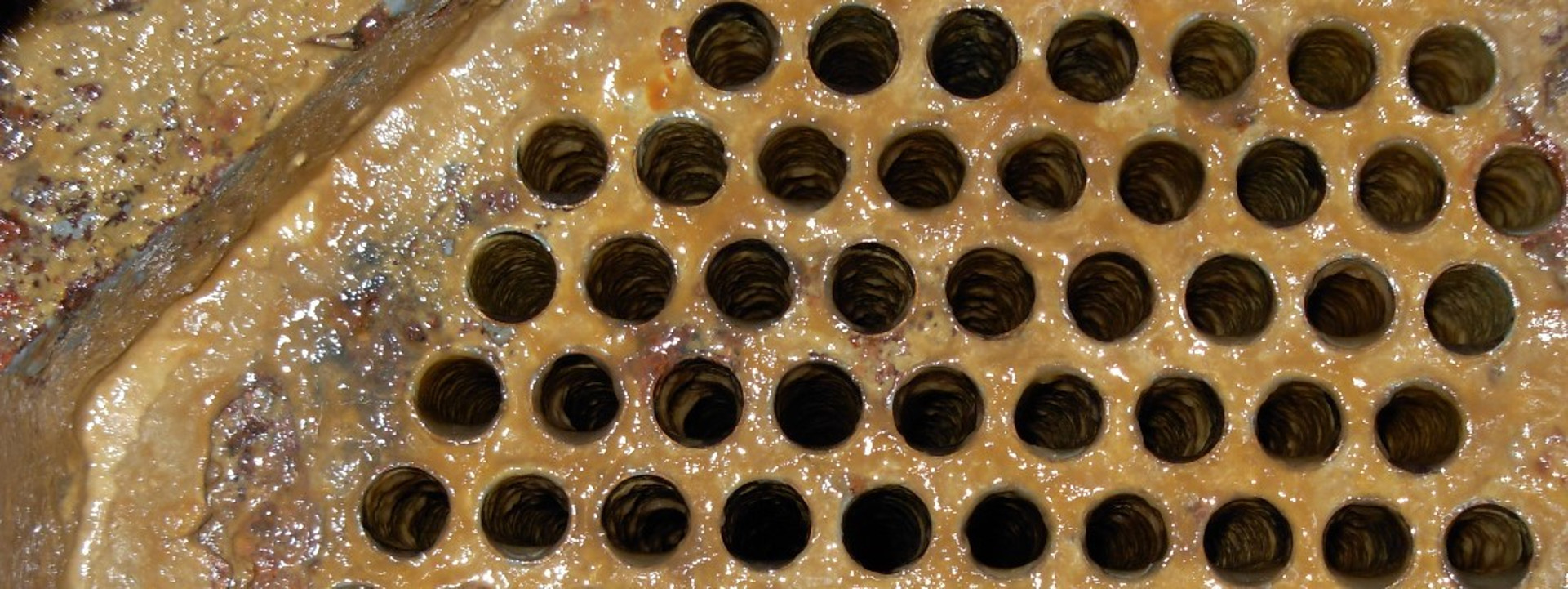Refinery, South East Asia, naphtha heat train
During refining oil in a refinery the oil has to be heated to rather high temperatures. For this the crude passes a row of heat exchangers. These heat exchangers tend to fouling after some time. Depending on the quality of the crude refined, this fouling happens rather fast. There are refineries, where cleaning heat exchanger has to be done once a year.
 Responsible for this fouling are impurities in the crude, such as tar, asphaltine and other solids. Over time all the inner surfaces of a heat exchanger will be covered by layer of dirt. In the case as shown in the flow sheet on the right, there a row of heat exchangers are connected to a so called heat train. On both sides of the heat exchanger there is oil, and the crude heading toward the Reboiler, is heated by the hot crude coming back from the process. This is actually done, in order to need less energy in the boiler, and the energy is used in a more efficient way. Over time the fouling takes place, which means the internal heat transfer in the heat exchanger is getting less and less, the layers of debris are insulating, therefore less energy is transferred from one side to the other.
Responsible for this fouling are impurities in the crude, such as tar, asphaltine and other solids. Over time all the inner surfaces of a heat exchanger will be covered by layer of dirt. In the case as shown in the flow sheet on the right, there a row of heat exchangers are connected to a so called heat train. On both sides of the heat exchanger there is oil, and the crude heading toward the Reboiler, is heated by the hot crude coming back from the process. This is actually done, in order to need less energy in the boiler, and the energy is used in a more efficient way. Over time the fouling takes place, which means the internal heat transfer in the heat exchanger is getting less and less, the layers of debris are insulating, therefore less energy is transferred from one side to the other.
As it is not possible to open such a heat exchanger now and then, there have to be other ways to see what is going on inside. One way is to calcualte the heat transfer Q.
In order to do so there have be calculated a lot of different data, here only one formula.


What can be seen in the graphs is the development of the heat transfer over time. The graph on the top shows the development of the heat transfer during 120 days before the installation of Merus. The graph below shows the development of the heat transfer at the first 120 days after the installation of Merus took place.
It is very obvious the trend has changed from an increasing trend to a decreasing trend. Or in other words there where app. 3 kW less energy needed to heat one ton of crude.
We found this is a very reliable way to check what is going on in the heat exchanger. Theoretically it is also possible to check the fuel consumption on the boiler as well, but this is a complicated method, due to various parameters of the fuel. And we as Merus have always to use the data we get from our customer.
There are until now no pictures available from the surfaces inside the heat exchangers. This is due to sometimes rather long cleaning cycles of up to only every 5 years. Right now there are 2 trails on their way in the Gulf area, where the cleaning cycles are rather short, or where it was agreed on to open the heat exchanger prior the trail and after 12 month of Merus in use. Once these data are available we will present them here as well.
Conclusion:
There is very clear evidence there is
- the decreasing of the heat transfer has been stopped
- it is the opposite the heat transfer is increased again
- savings of 3 or even more Kilowatts per treated ton of crude
Having a stable heat transfer, with less fouling in the heat exchanger will automatically lead to savings of a lot of energy. Less fouling will increase the safety of operation, there might be less emergency shutdown, so the whole operation of the refinery will be more smooth.
After long term studies, which has to be done, it might be even possible to increase the service cycles at all these critical heat exchangers in a refinery, from e.g. 3 years today, to only every 4 or 5 years. If this will be possible the savings would be tremendous, as a day shutdown is easy costing several millions of USD.

